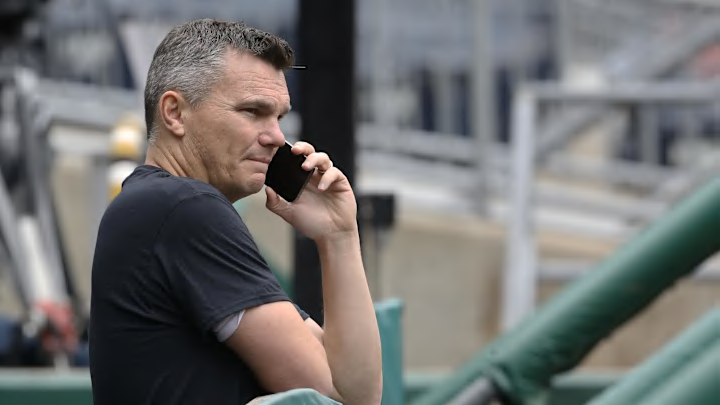2022
The Pirates only made two moves of note at the 2022 trade deadline. However, those two moves are paying major dividends now, and could greatly affect the long-term plans for the good. The big move the Pirates made was trading Jose Quintana to the St. Louis Cardinals. Quintana was expected to fill a similar role as Tyler Anderson did the previous season, signing a one-year deal in hopes he could eat some innings as a back of the rotation arm.
However, the Pirates not only got a lot of innings out of him but arguably the best season of his career. Quintana pitched to a 3.50 ERA, 3.23 FIP, and 1.27 WHIP. Quintana only had a 20.6% strikeout rate, but kept walks to a minimum (7.2%), as well as home runs (0.61 HR/9 rate). Despite Quintana only being a rental, the Pirates got back two noteworthy players.
The first was Johan Oviedo. Oviedo was working out of the Cards’ bullpen at the time of the deal. A hard-throwing righty, the Pirates knew there would be some relief risk with Oviedo. However, that didn’t stop them from giving him an extended look in their rotation this year, and he’s taken full advantage of it. While Oviedo has had his ups and downs this season, mostly struggling with game-to-game consistency, he’s made it clear that he could be a long-term rotation anchor.
The second player was Malcolm Nunez, a power-hitting third baseman/first baseman. Nunez was breaking out for the Cards’ Double-A affiliate at the time of the deal. He continued to hit well for the Pirates’ affiliates and potentially would have already made his Major League debut had it not been for an injury that kept Nunez out nearly two whole months. But Nunez is back in action at Triple-A Indy and is looking to keep up the hot streak he started when he landed on the IL.
The other noteworthy move the Pirates made was sending designated hitter Daniel Vogelbach to the New York Mets. 2022 was the first year MLB introduced the universal designated hitter (in a full season), so the Pirates had to fill the new line-up spot with someone. That someone ended up being Vogelbach.
The DH ended up giving the Pirates some decent results, slashing .228/.338/.430 with a .337 wOBA, and 117 wRC+. Vogelbach walked at a high 14.4% rate but had a so-so 24.1% strikeout rate. He did hit for solid pop, however with a .202 ISO. He also hit really well leading up to the trade with an OPS over .900 and wRC+ of 157 in the month prior to being moved.
The Pirates received relief pitching prospect Colin Holderman in return. Holderman didn’t get to pitch much for the Bucs down the stretch of 2022, as his season was cut short by injury. But he’s come back in 2023 and has shown off the potential to be the team’s long-term set-up man.
The righty reliever owns a 3.38 ERA, 3.41 FIP, and 1.33 WHIP through 40 innings. Holderman has struck out just over a quarter of the opponents he’s faced with a 25.6% strikeout rate to pair with a decent 7.6% walk rate. Home runs have really been the only thing he’s struggled with, though an 0.9 HR/9 is still solid nonetheless. These numbers could have looked better had it not been for a rough June where he only pitched four innings, and allowed six earned runs on two home runs before landing on the IL. Outside of June, Holderman has a 2.25 ERA and 2.55 FIP in 36 innings pitched.
Although Vogelbach did pretty well for the Mets in 2022, he’s struggled this season with a wRC+ of just 93. There’s a good chance the Mets non-tender Vogelbach following this season. Holderman, meanwhile, is still a year away from arbitration. Based on what he’s shown so far, he looks like he could be an integral part to the bullpen long term.
This deadline looks like it could be an important one for the long term of the team. Oviedo has been a quality starting pitcher while Holderman has been a good set-up man for the most part. If Nunez, who is nearly MLB-ready, can post a positive WAR for the Pirates, they will go three-for-three on getting at least semi-productive players from their 2022 deadline haul.
